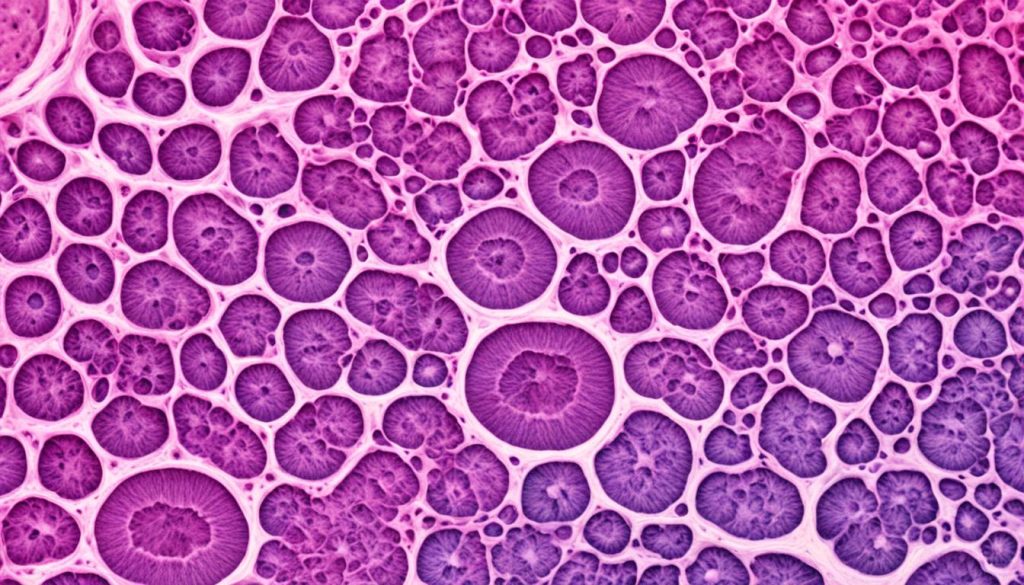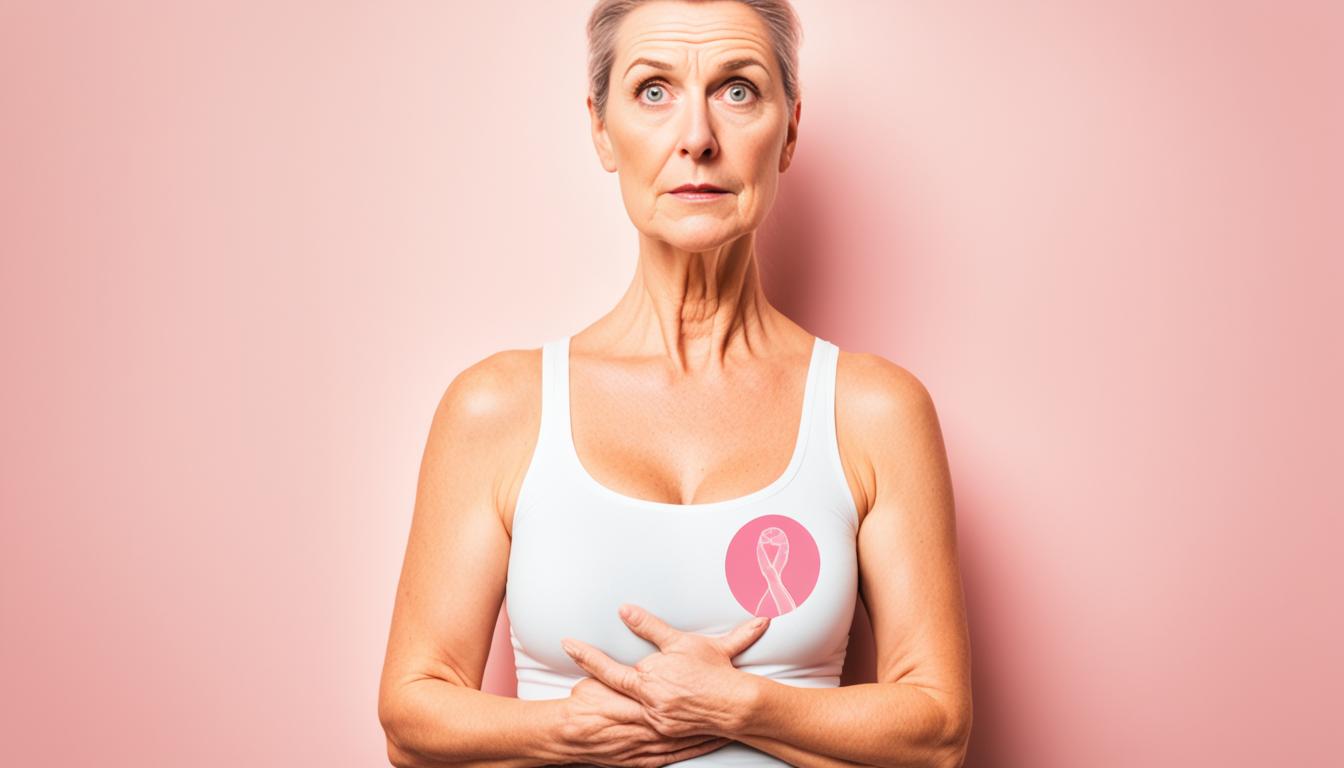What Are the 5 Warning Signs of Breast Cancer?
Breast cancer is one of the most prevalent forms of cancer affecting women worldwide. Detecting breast cancer in its early stages significantly increases the chances of successful treatment and recovery. Understanding the warning signs and symptoms is essential for timely intervention.
Recognizing these signs can help you seek medical attention and undergo further evaluation if necessary. Some of the warning signs include:
- A new lump in the breast or underarm
- Thickening or swelling of part of the breast
- Irritation or dimpling of breast skin
- Redness or flaky skin in the nipple area or breast
- Pulling in of the nipple or pain in the nipple area
While experiencing these symptoms doesn’t automatically mean you have breast cancer, they should be taken seriously and discussed with your healthcare provider.
Continue reading to learn more about other breast changes to watch for, common causes of breast lumps, and the types of breast cancer and their associated symptoms.
Understanding Normal Breast Changes and Conditions
When it comes to breast health, it’s important to understand that what is considered normal can vary from person to person. Most women describe their breasts as feeling lumpy or uneven, and this is generally considered a normal characteristic. However, it’s crucial to be aware of any changes or abnormalities that may occur. In this section, we will explore the different aspects of normal breast changes, including texture, size, shape, and skin changes.
Texture
The texture of your breasts can change for various reasons, such as hormonal fluctuations, weight fluctuations, pregnancy, and certain medications. These changes can lead to variations in the feel of your breast tissue. It’s essential to familiarize yourself with the normal texture of your breasts so that you can recognize any unusual lumps or bumps that may develop.
Size and Shape
It’s common for breasts to change in size and shape over time. Factors such as hormonal changes during the menstrual cycle, pregnancy, breastfeeding, and menopause can all contribute to these variations. Additionally, weight fluctuations, aging, and certain medical conditions can also impact breast size and shape. Understanding what is normal for your breasts can help you identify any significant changes that may warrant further investigation.
Skin Changes
Changes in the appearance and condition of the breast skin can occur due to multiple factors. Hormonal changes, age, pregnancy, and breastfeeding can all influence the elasticity and texture of the skin. Some women may experience changes, such as redness, flakiness, or dimpling of the breast skin. It’s important to be aware of these skin changes and seek medical advice if they persist or are accompanied by other concerning symptoms.
Regularly monitoring your breasts and being aware of what is normal for you is an essential part of breast health. While normal breast changes are usually nothing to be concerned about, it’s crucial to remain vigilant for any unusual lumps, persistent pain, or other changes that may indicate a potential issue. Early detection plays a significant role in successful treatment outcomes, so don’t hesitate to consult with your healthcare provider if you have any concerns.
Common Causes of Breast Lumps
Many breast lumps are not cancerous and can be caused by various medical conditions. Understanding the common causes of breast lumps can help alleviate concerns and provide valuable peace of mind.
Fibrocystic Breast Condition
Fibrocystic breast condition is a noncancerous condition that causes changes in the breast tissue. It can result in breast lumps and tenderness, making the breasts feel lumpy or rope-like to the touch. While fibrocystic breast condition can be uncomfortable, it does not increase the risk of breast cancer.
Cysts
Cysts are small fluid-filled sacs that can develop in the breast. They often feel smooth and round, and their size can vary. Breast cysts are typically benign and may come and go with the menstrual cycle. However, if a cyst continues to grow or causes discomfort, it is advisable to consult a healthcare professional.
Other Benign Breast Conditions
In addition to fibrocystic breast condition and cysts, there are other benign breast conditions that can lead to the formation of breast lumps. These include:
- Fibroadenomas: Noncancerous growths that are commonly found in younger women. They are usually firm and smooth to the touch.
- Breast infections: Infections in the breast tissue can cause painful lumps and swelling.
- Clogged milk glands: When milk ducts become blocked, it can result in the formation of a lump.
- Injuries that form scar tissue: Trauma to the breast, such as a previous surgery or injury, can lead to the development of scar tissue, which may feel like a lump.
It’s important to note that any breast lump should be evaluated by a healthcare professional to determine the cause and ensure appropriate treatment, if necessary. Regular breast self-examinations and routine screenings are essential for maintaining breast health and detecting any changes or abnormalities.
| Condition | Description |
|---|---|
| Fibrocystic Breast Condition | Noncancerous changes in breast tissue causing lumpy and tender breasts. |
| Cysts | Small fluid-filled sacs that can develop in the breast. |
| Fibroadenomas | Noncancerous growths commonly found in younger women. |
| Breast Infections | Infections in the breast tissue causing painful lumps and swelling. |
| Clogged Milk Glands | Blockage of milk ducts leading to the formation of a lump. |
| Injuries that form Scar Tissue | Trauma to the breast resulting in the development of scar tissue, resembling a lump. |

References:
- American Cancer Society. (2021). Non-cancerous breast conditions. https://www.cancer.org/cancer/breast-cancer/non-cancerous-breast-conditions.html
- Mayo Clinic. (2021). Lumps. https://www.mayoclinic.org/symptoms/lumps/basics/definition/sym-20050690
Common Symptoms of Breast Cancer
The symptoms of breast cancer can vary from person to person and may not always be apparent. It is important to recognize the common signs that may indicate the presence of breast cancer.
Some of the most common symptoms include:
- Breast lump: A new lump or mass in the breast or armpit can be a potential sign of breast cancer. It is important to note that not all breast lumps are cancerous, but any new lump should be evaluated by a healthcare professional.
- Changes in breast appearance: Dimpling or redness of the skin on the breast may be a symptom of breast cancer. These changes can occur due to the growth of cancerous cells in the breast tissue.
- Breast or nipple pain: Persistent pain in the breast or nipple can be a symptom of breast cancer. It is important to consult a doctor if you experience any ongoing discomfort or pain.
- Nipple changes: Changes in the appearance or position of the nipple, such as nipple retraction or inversion, may be a sign of breast cancer. Consulting a healthcare professional is essential if you notice any changes in your nipples.
- Nipple discharge: Nipple discharge that is not breast milk, including blood or a clear fluid, can be a symptom of breast cancer. Any unusual discharge should be evaluated by a doctor.
- Swelling of the breast: Swelling of all or part of the breast can be a symptom of breast cancer. If you notice any unexplained swelling, it is important to seek medical attention.

Types of Breast Cancer and Their Symptoms
Breast cancer is a complex disease, with different types that have their own characteristics and symptoms. Understanding these types is crucial for early detection and appropriate treatment. Let’s explore the most common types of breast cancer:
Ductal Carcinoma
Ductal carcinoma is the most prevalent type of breast cancer. It originates in the milk ducts, which are responsible for carrying milk from the lobules to the nipple. This type can be further classified as invasive ductal carcinoma, which means the cancer has spread beyond the ducts into the surrounding breast tissue.
Lobular Carcinoma
Lobular carcinoma starts in the lobules, which are milk-producing glands within the breast. This type accounts for a smaller percentage of breast cancer cases and can also be invasive, spreading to nearby tissues.
Triple-Negative Breast Cancer
Triple-negative breast cancer is a subtype that is characterized by the absence of three receptors: estrogen, progesterone, and HER2. It tends to be more aggressive and fast-growing compared to other types. This type of breast cancer can occur in both men and women, although it is relatively rare.
Male Breast Cancer
While breast cancer is more commonly associated with women, it can also affect men. Male breast cancer accounts for less than 1% of all breast cancer cases. The symptoms and treatment options are similar to those for women, but due to its rarity, awareness and early detection are particularly important in male individuals.
Each type of breast cancer may present with different symptoms, although some symptoms may overlap. It is essential to be aware of any changes in the breast and seek medical attention if you notice any of the following:
- A new lump or mass in the breast or armpit
- Changes in breast size, shape, or texture
- Swelling or dimpling of the skin
- Nipple retraction or inversion
- Nipple discharge (other than breast milk)
- Breast or nipple pain
Remember, early detection and prompt medical intervention can significantly increase the chances of successful treatment. Regular breast self-exams, routine screenings, and awareness of the symptoms associated with different types of breast cancer are essential steps in maintaining breast health.
Recurrence and Metastasis of Breast Cancer
Even after undergoing treatment, breast cancer can recur or spread to other parts of the body. It is important to be aware of the symptoms that may indicate a recurrence or metastasis.
Symptoms of recurrent breast cancer may include:
- A new lump or mass in the breast
- Changes in breast appearance
- Lumps on the skin of the chest
- Swelling in the armpit or arm
- Pain or numbness in the breast or arm
- Other specific symptoms depending on the location of metastasis
Regular follow-up appointments and screenings are crucial in monitoring for any signs of recurrence or metastasis. By detecting these changes early, healthcare professionals can provide appropriate treatment and management strategies.
To visually represent the information, here is an illustrative table depicting the symptoms of recurrent and metastatic breast cancer:
| Symptoms | Indications |
|---|---|
| A new lump or mass in the breast | May suggest a recurrence of breast cancer |
| Changes in breast appearance | Significant alterations in the size, shape, or texture of the breast |
| Lumps on the skin of the chest | Skin metastasis, where cancer has spread to the skin |
| Swelling in the armpit or arm | Enlarged lymph nodes due to metastasis |
| Pain or numbness in the breast or arm | Indicates possible nerve involvement or bone metastasis |
| Other specific symptoms depending on the location of metastasis | Varies depending on where the cancer has spread |
Regular communication and cooperation with healthcare professionals are vital for effectively managing recurrent and metastatic breast cancer. By remaining vigilant and addressing any changes promptly, individuals can ensure they receive the appropriate care and support needed through their journey.

Conclusion
Recognizing the warning signs of breast cancer and being proactive about breast health is crucial for early detection and better treatment outcomes. It’s important to remember that while the symptoms mentioned can be potential indicators of breast cancer, they can also be caused by benign conditions. Therefore, if you notice any changes or have concerns, it’s essential to consult a healthcare professional for further evaluation and guidance.
Regular self-exams and screening tests, such as mammograms, are key components of breast health. By performing self-exams regularly, you can become familiar with how your breasts normally look and feel, enabling you to detect any unusual changes. When combined with regular mammograms as recommended by your doctor, you greatly increase your chances of early detection and successful treatment.
Remember, early detection saves lives. Breast cancer awareness should be a priority for all individuals, regardless of gender or age. By spreading awareness and staying informed, we can work together to promote early detection, improve breast health, and ultimately reduce the impact of breast cancer on our lives and the lives of our loved ones.
FAQ
1. What are the warning signs of breast cancer?
The warning signs of breast cancer include a new lump in the breast or underarm, thickening or swelling of part of the breast, irritation or dimpling of breast skin, redness or flaky skin in the nipple area or breast, pulling in of the nipple or pain in the nipple area, nipple discharge other than breast milk (including blood), and any changes in the size or shape of the breast.
2. What are normal breast changes and conditions?
Normal breast changes can include texture, size, and shape variations due to factors like hormonal changes, weight fluctuations, pregnancy, and certain medications. Some common conditions that can cause breast changes include fibrocystic breast condition, which causes noncancerous changes in breast tissue, and cysts, which are small fluid-filled sacs that can develop in the breast.
3. What are the common causes of breast lumps?
Breast lumps can have various causes, including fibrocystic breast condition, which causes noncancerous changes in the breast tissue, and cysts, which are small fluid-filled sacs that can develop in the breast. Other benign breast conditions, such as fibroadenomas, breast infections, clogged milk glands, and injuries that form scar tissue, can also lead to breast lumps.
4. What are the common symptoms of breast cancer?
Common symptoms of breast cancer can include a new lump or mass in the breast or armpit, changes in the skin texture such as dimpling or redness, breast or nipple pain, nipple retraction or inversion, nipple discharge (other than breast milk), and swelling of all or part of the breast.
5. What are the different types of breast cancer and their symptoms?
There are different types of breast cancer, including ductal carcinoma (the most common type that begins in the milk ducts), lobular carcinoma (beginning in the lobules that produce milk), and triple-negative breast cancer (a subtype that grows and spreads faster and doesn’t have receptors for estrogen, progesterone, or HER2). Breast cancer can also occur in men, although it is rare.




